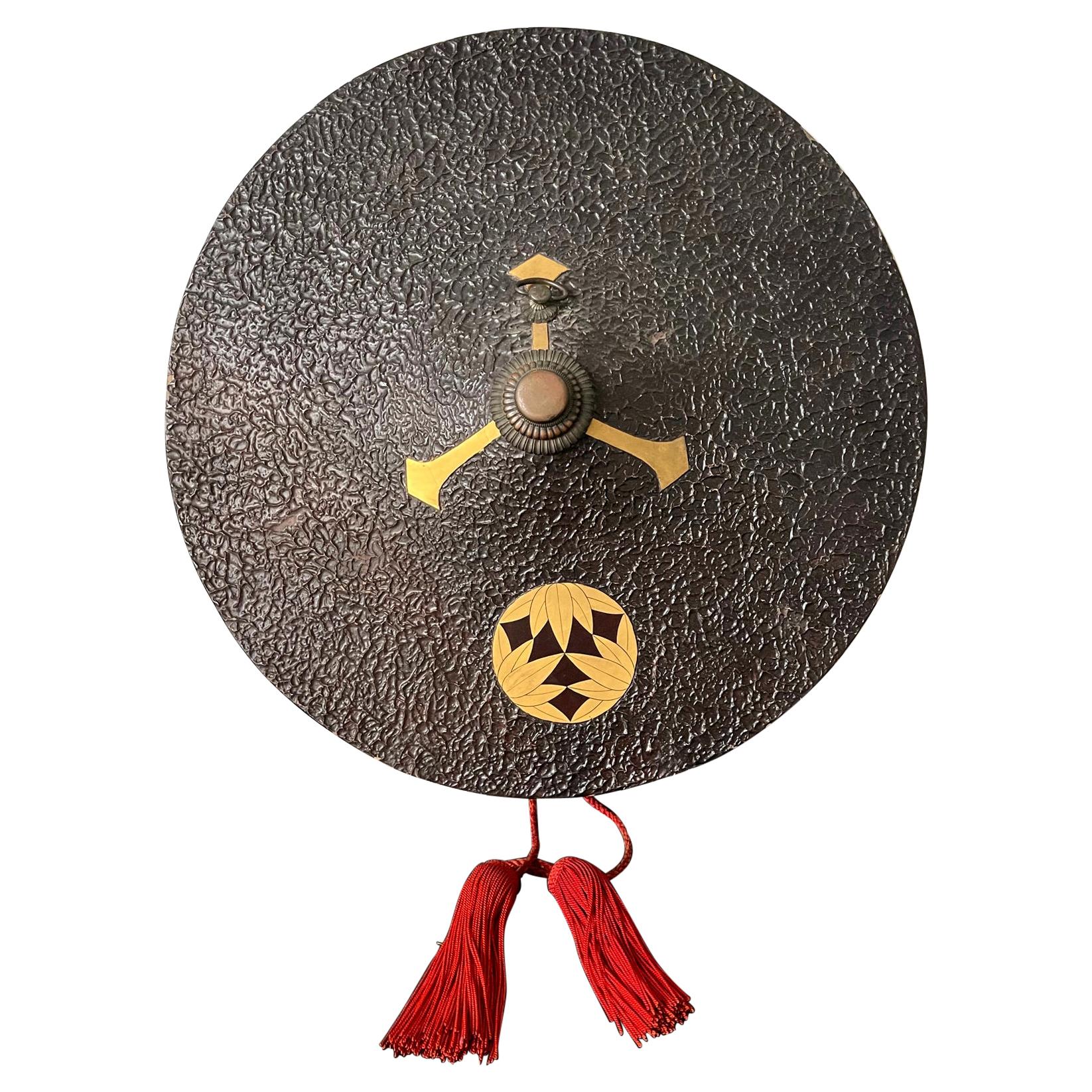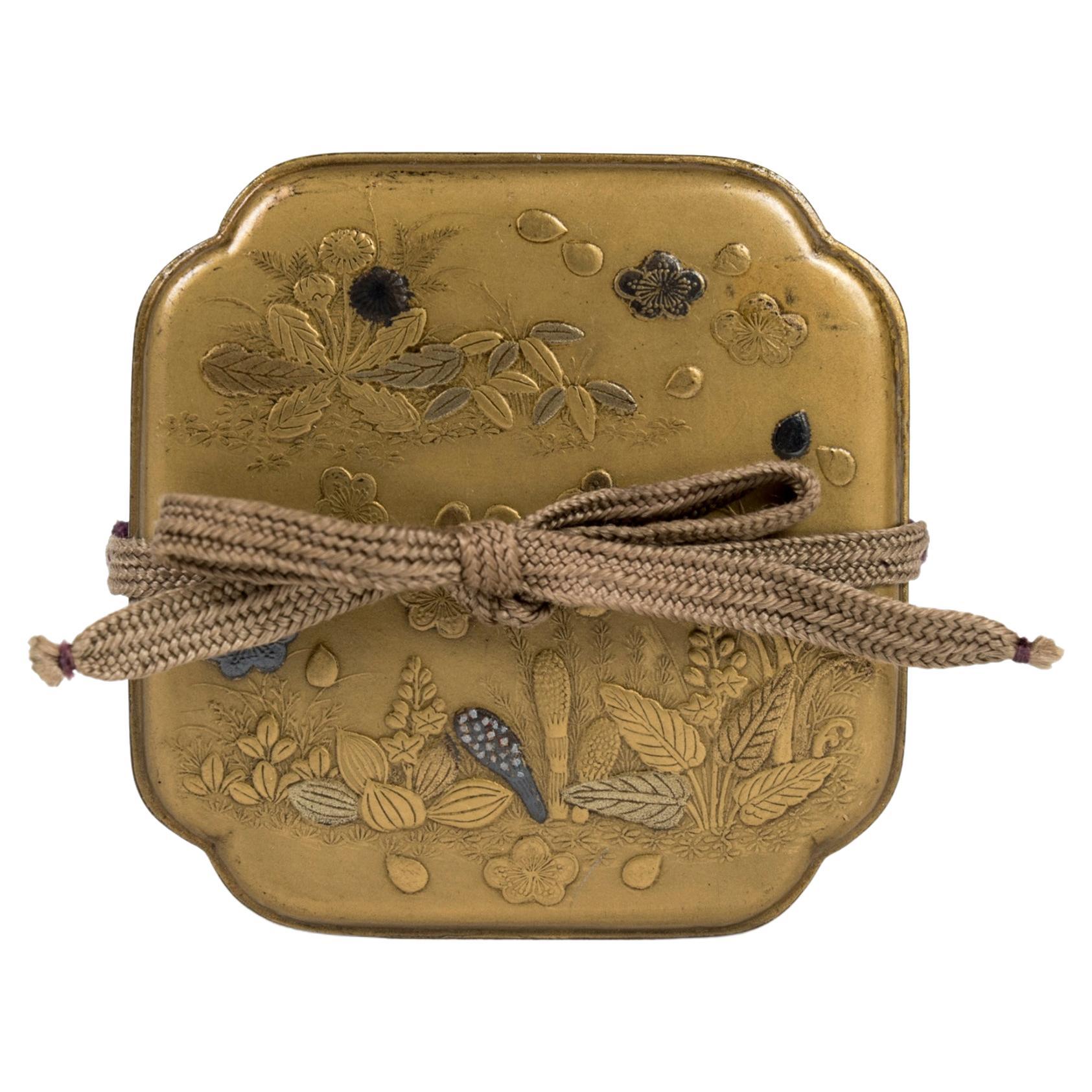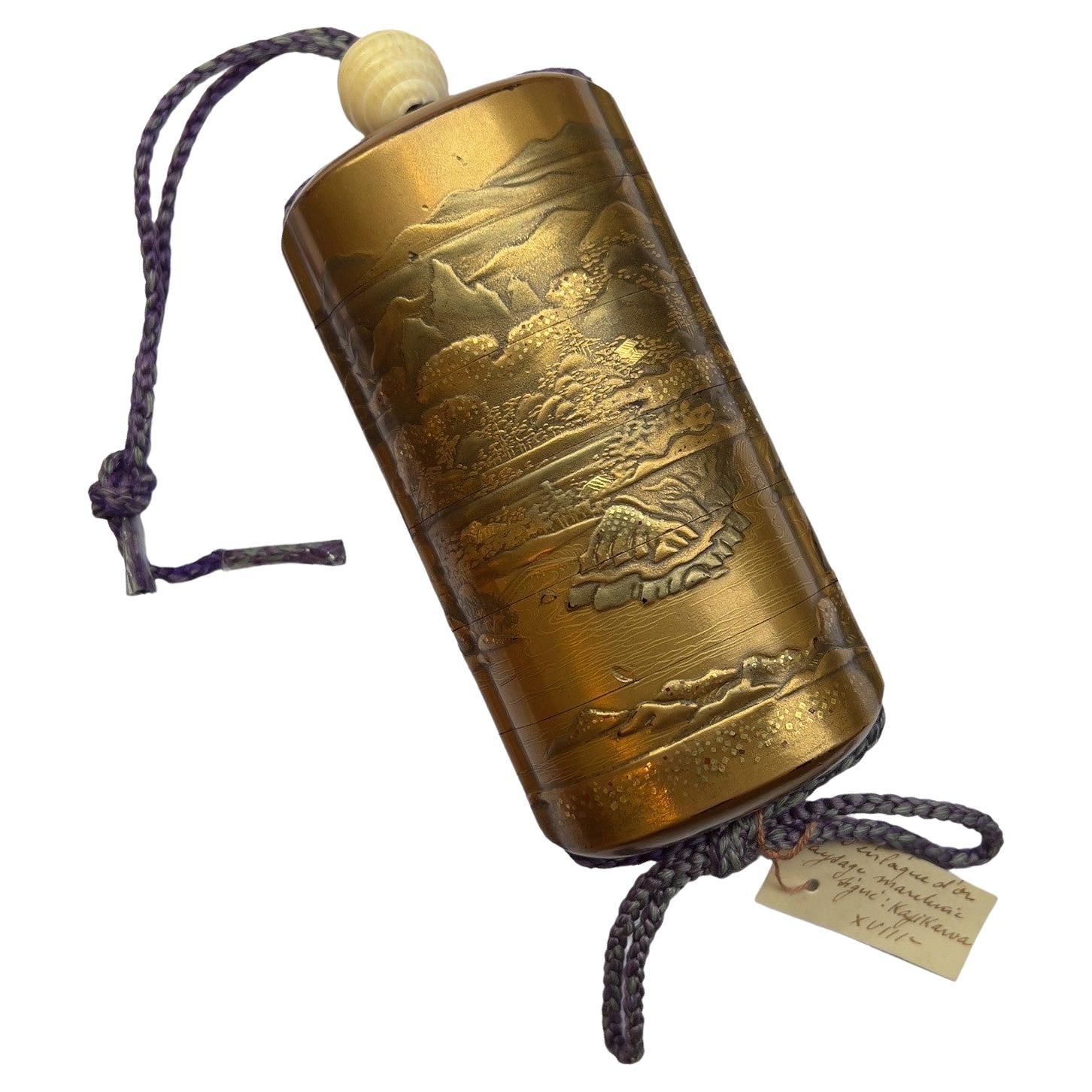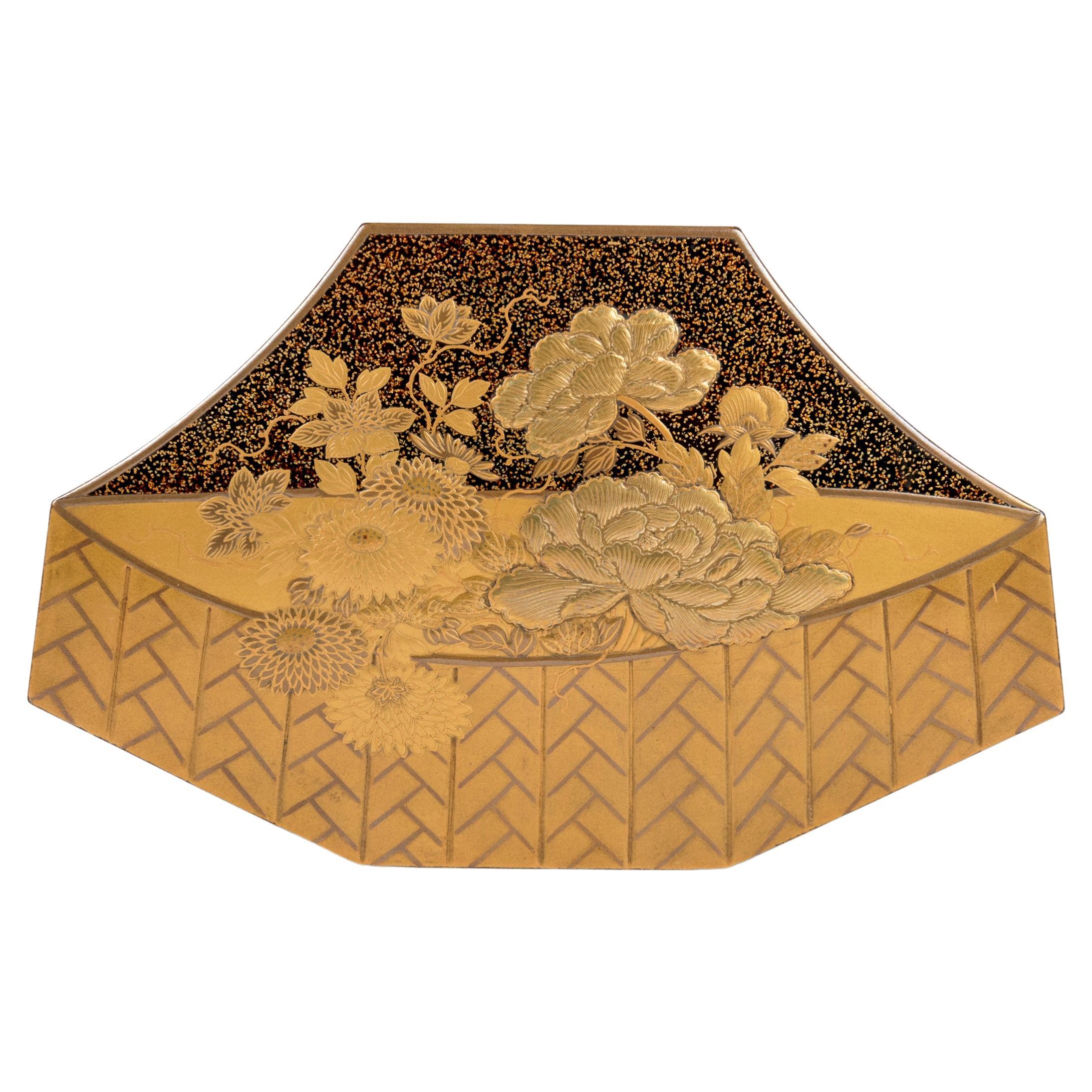Items Similar to Japanese Samurai Abumi Stirrups Lacquer Edo, 18th Century
Want more images or videos?
Request additional images or videos from the seller
1 of 10
Japanese Samurai Abumi Stirrups Lacquer Edo, 18th Century
About the Item
Japanese Samurai Abumi Stirrups lacquer Edo late 18th century, early 19th century.
Measures: 12 inch length, 10 inch height, 5.5 inch width.
AVANTIQUES is dedicated to providing an exclusive curated collection of Fine Arts, Paintings, Bronzes, Asian treasures, Art Glass and Antiques. Our inventory represents time-tested investment quality items with everlasting decorative beauty. We look forward to your business and appreciate any reasonable offers. All of our curated items are vetted and guaranteed authentic and as described. Avantiques only deals in original antiques and never reproductions. We stand behind our treasures with a full money back return if the items are not as described.
Early abumi were flat-bottomed rings of metal-covered wood, similar to European stirrups. The earliest known examples were excavated from tombs. Cup-shaped stirrups (tsubo abumi) that enclosed the front half of the rider's foot eventually replaced the earlier design.
During the Nara period, the base of the stirrup which supported the rider's sole was elongated past the toe cup. This half-tongued style of stirrup (hanshita abumi) remained in use until the late Heian period (794 to 1185) when a new stirrup was developed. The fukuro abumi or musashi abumi had a base that extended the full length of the rider's foot and the right and left sides of the toe cup were removed. The open sides were designed to prevent the rider from catching a foot in the stirrup and being dragged.
The military version of this open-sided stirrup, called the shitanaga abumi, was in use by the middle Heian period. It was thinner, had a deeper toe pocket and an even longer and flatter foot shelf. It is not known why the Japanese developed this unique style of stirrup, but this stirrup stayed in use until European style-stirrups were introduced in the late 19th century.[4] The abumi had a distinctive swan-like shape, curved up and backward at the front so as to bring the loop for the leather strap over the instep and achieve a correct balance.
Most of the surviving specimens from this period are made entirely of iron, inlaid with designs of silver or other materials, and covered with lacquer. In some cases, there is an iron rod from the loop to the footplate near the heel to prevent the foot from slipping out. The footplates are occasionally perforated to let out water when crossing rivers, and these types are called suiba abumi. There are also abumi with holes in the front forming sockets for a lance or banner.
Please also consider Avantique’s antique and ancient Asian Art Collection of Han Dynasty, Tang Dynasty, Ming Dynasty, Qing, and Republic period items to complete your home and office decorations with class. Avantiques has Asian pottery, terra cotta, bronze, and paintings to complement your collection. We strive to collect the highest quality Asian antiquities in exceptional condition.
- Dimensions:Height: 10 in (25.4 cm)Width: 12 in (30.48 cm)Depth: 5.5 in (13.97 cm)
- Sold As:Set of 2
- Style:Edo (Of the Period)
- Materials and Techniques:
- Place of Origin:
- Period:
- Date of Manufacture:1800
- Condition:Wear consistent with age and use.
- Seller Location:Dallas, TX
- Reference Number:1stDibs: LU1774211516721
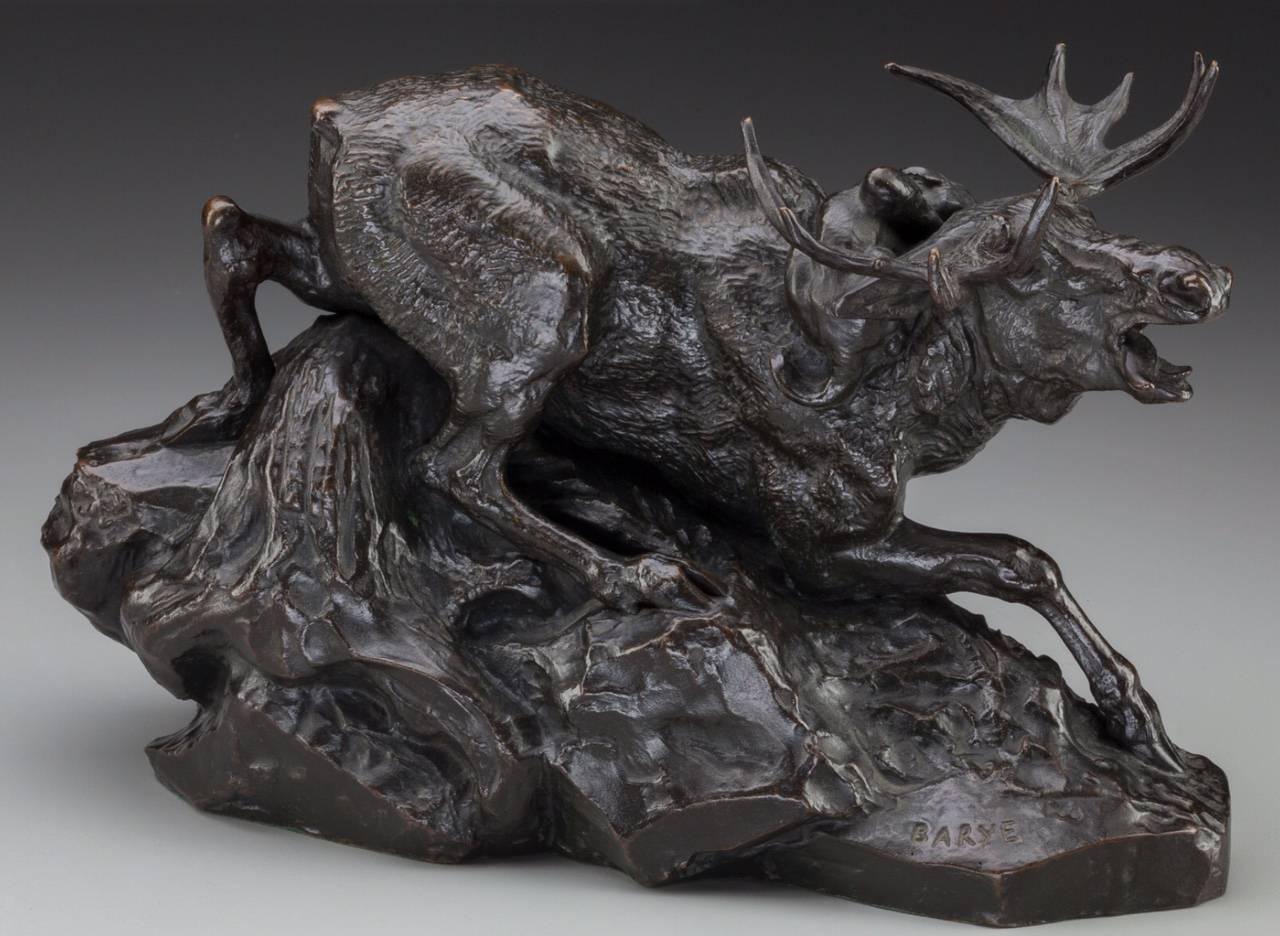
About the Seller
4.9
Gold Seller
These expertly vetted sellers are highly rated and consistently exceed customer expectations.
Established in 2000
1stDibs seller since 2015
403 sales on 1stDibs
Typical response time: 1 hour
- ShippingRetrieving quote...Ships From: Dallas, TX
- Return PolicyA return for this item may be initiated within 7 days of delivery.
More From This SellerView All
- Pair of 18th Century Japanese Edo Period Lacquered Samurai Iron StirupsLocated in Dallas, TX18th century Japanese Edo period Lacquered Samouri Iron stirups with original wooden lacquered insoles. Truly a beautiful pair of Japanese ...Category
Antique Late 18th Century Japanese Edo Metalwork
MaterialsIron
- 18th-19th Century Tibetan ThankaLocated in Dallas, TXTibetan Buddhist thangka from the late 18th early 19th century. Distemper on cloth (either silk or cotton) Depicting a Buddhist deity with multi arms and Buddhist religious relics ...Category
Antique Early 19th Century Tibetan Tibetan Paintings
MaterialsPaint
- 18th Century Tibetan Thangka Of Amitayus BuddhaLocated in Dallas, TXA THANGKA DEPICTING AMITAYUS, 18TH CENTURY Tibet. Distemper on cloth, with a silk brocade frame, mounted as a hanging scroll with wood handles. Finely painted with Amitayus seated i...Category
Antique Mid-18th Century Tibetan Tibetan Paintings
MaterialsSilk
- Khmer Bronze Maitreya Buddha 17th/18th Century with WritingsLocated in Dallas, TXKhmer Bronze Buddha Cambodia, 17th/18thC Copper and Bronze sculpture representing seated Buddha with traces of gilding. Writings on verso; possibly a prayer. Dimensions: Height 6 1/4 inches (15.8 cm)} AVANTIQUES is dedicated to providing an exclusive curated collection of Fine Arts, Paintings, Bronzes, Asian treasures, Art Glass and Antiques. Our inventory represents time-tested investment quality items with everlasting decorative beauty. We look forward to your business and appreciate any reasonable offers. All of our curated items are vetted and guaranteed authentic and as described. Avantiques only deals in original antiques and never reproductions. We stand behind our treasures with a full money back return policy if the items are not as described. Please also consider Avantique’s antique and ancient Asian Art...Category
Antique 18th Century Cambodian Malayer Figurative Sculptures
MaterialsBronze
- Pair Chinese 18th Century Late Ming Bronze Archaistic Gu VasesLocated in Dallas, TXNear Pair of Chinese Archaic bronze Gu vases. 18th century Late Ming Period, Measures: Height: 11.4 inches. Diameter: 6.4 Inches Condition: Very good with ...Category
Antique Mid-18th Century Chinese Archaistic Vases
MaterialsBronze
- Three Asian Cast Bronze Figures of Buddha 18th-19th centuryLocated in Dallas, TXComprising a Burmese and two Nepalese figures of the seated Buddha. Height of tallest 7.75 x 6 x 3,75 inches. 19th century Medium: 5 Inches. 19th century Smallest: 3.75 Inches. 1...Category
Antique Early 19th Century Figurative Sculptures
MaterialsBronze
You May Also Like
- Japanese Lacquer Writing Box, Suzuribako, Edo Period, 18th Century, JapanLocated in Austin, TXAn exceptionally fine and unusual Japanese lacquer writing implements box, suzuribako, in the form of a zither, koto, Edo Period, 18th century, Japan. With a modern wood storage box,...Category
Antique 18th Century Japanese Edo Lacquer
MaterialsGold, Silver, Copper
- Japanese Lacquered Samurai Jingasa Hat Edo PeriodLocated in Atlanta, GAA bespoken Japanese historical hat known as Jinggasa (militant hat) that was worn by samurai in Edo period (1603-1868) circa 18-19th century. There were several subtypes of Jingasa a...Category
Antique 19th Century Japanese Japonisme Lacquer
MaterialsWood, Lacquer
- Japanese Lacquer and Cinnabar "Samurai" Cabinet, Inaba Family, Edo PeriodLocated in Troy, NYExceptionally large and rare lacquer cabinet. According to the heraldry, visible on the headgear in one of the panels, it was made for the Inaba family, a high ranking Daimyo family,...Category
Antique Late 19th Century Japanese Edo Lacquer
MaterialsWood
- Japanese golden kobako flowers Edo period 18th centuryLocated in PARIS, FRQuadrangular kobako box decorated with flowers in gold and blue lacquer with aogai inlay. Lid and sides in fundame lacquer, underside and interio...Category
Antique 18th Century Japanese Japonisme Lacquer
MaterialsGold
- Japan, Late 18th Century Gold Lacquer Inro by Kajikawa, Edo PeriodLocated in PARIS, FRLate 18th century Inro by Kajikawa. Edo period Beautiful inro in gold lacquer representing a continuous landscape on both sides. The interior in Nashiji lacquer. Some small traces...Category
Antique 18th Century Japanese Lacquer
MaterialsLacquer
- Japanese peony basket lacquered box EdoLocated in PARIS, FREight-sided, flared shaped lacquer kobako box, following the decoration on the lid depicting a basket of flowers, composed of peonies and chrysanthemums in gold takamaki-e and hirama...Category
Antique 18th Century Japanese Edo Lacquer
MaterialsGold

